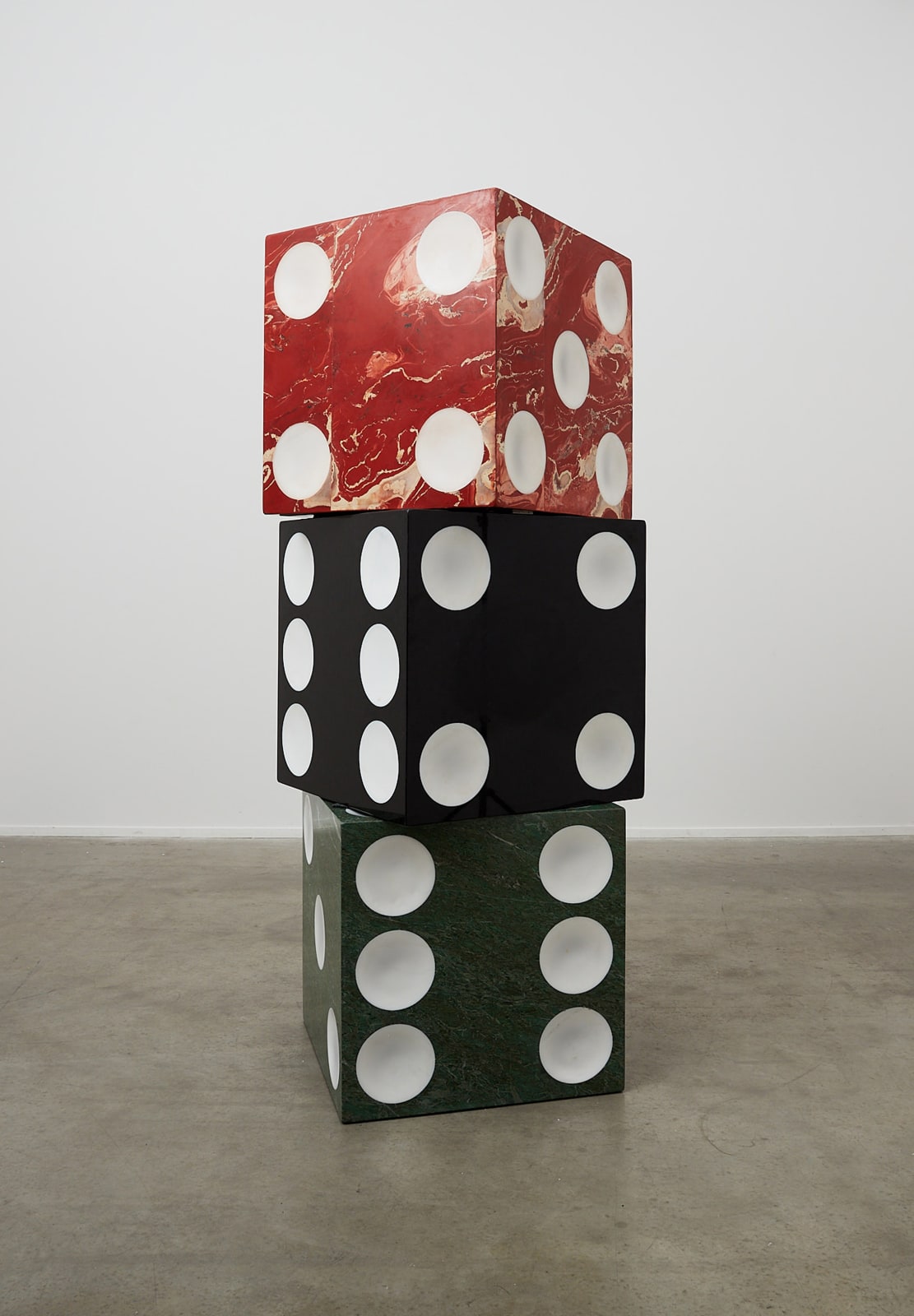




Awol Erizku Ethiopian-American, b. 1988
Head Crack (Stack or Starve), 2022
Black Absolute granite, Verde Malachite marble and Red Jasper from Madagascar
3 blocks, 73.6 x 73.6 x 73.6 cm. (29 x 29 x 29 in.) each
Copyright The Artist
Further images
Awol Erizku’s Head Crack (Stack or Starve) is a commanding sculptural work comprising three oversized dice, carved from Black Absolute granite, Verde Malachite marble, and Red Jasper from Madagascar. Developed...
Awol Erizku’s Head Crack (Stack or Starve) is a commanding sculptural work comprising three oversized dice, carved from Black Absolute granite, Verde Malachite marble, and Red Jasper from Madagascar. Developed in close collaboration with master artisans in Carrara, Italy—renowned for its centuries-old marble traditions—the work brings together traditional sculptural techniques with contemporary cultural symbolism.
The sculpture references the street dice game Cee-Lo, a game that was omnipresent in Erizku’s upbringing in the Bronx. Cee-Lo, typically played with three six-sided dice, is a high-stakes game of chance that has long held a place in urban street culture, particularly among young men of colour. The title of the work—Head Crack—refers to the game’s highest roll (a 4-5-6), a winning combination that in street parlance connotes both triumph and risk. “Stack or starve” underscores the precariousness of survival and success in a system where luck, rather than equity, often determines outcomes.
Stacked vertically in the red, black, and green of the Pan-African flag, the dice also function as a powerful symbol of diasporic identity and unity. In Erizku’s hands, the form of the dice transcends play: it becomes a sculptural embodiment of social and economic struggle, aspiration, and resilience. At once deeply personal and politically charged, Head Crack (Stack or Starve) meditates on the role of chance in the lives of those historically denied structural advantage, while affirming cultural inheritance and self-determination.
The sculpture references the street dice game Cee-Lo, a game that was omnipresent in Erizku’s upbringing in the Bronx. Cee-Lo, typically played with three six-sided dice, is a high-stakes game of chance that has long held a place in urban street culture, particularly among young men of colour. The title of the work—Head Crack—refers to the game’s highest roll (a 4-5-6), a winning combination that in street parlance connotes both triumph and risk. “Stack or starve” underscores the precariousness of survival and success in a system where luck, rather than equity, often determines outcomes.
Stacked vertically in the red, black, and green of the Pan-African flag, the dice also function as a powerful symbol of diasporic identity and unity. In Erizku’s hands, the form of the dice transcends play: it becomes a sculptural embodiment of social and economic struggle, aspiration, and resilience. At once deeply personal and politically charged, Head Crack (Stack or Starve) meditates on the role of chance in the lives of those historically denied structural advantage, while affirming cultural inheritance and self-determination.




